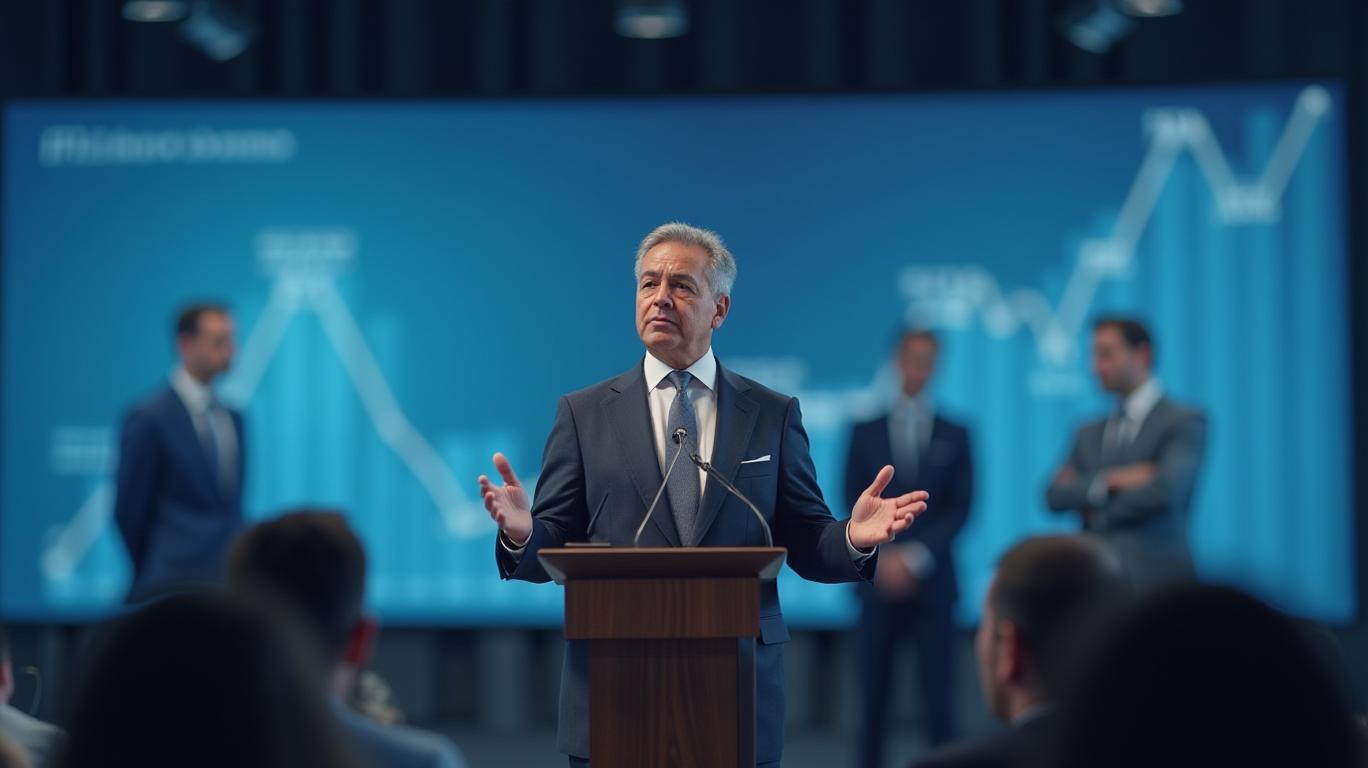FTAI Infrastructure (FIP): A Mixed Bag Post-Q4 Earnings—Buy, Sell, or Hold?
FTAI Infrastructure (NASDAQ:FIP), a diversified infrastructure company managing railroads, terminals, and energy assets, reported its Q4 2024 earnings last month. While the results highlighted strategic progress in key segments, they also exposed persistent financial challenges. Investors now face a critical question: Does FTAI’s forward-looking potential outweigh its current struggles, or is the stock a risky bet? Let’s break down the numbers.
Key Financial Highlights: A Tale of Two Metrics
The quarter’s net loss of $137.2 million ($1.24 per share) marked a sharp deterioration from the year-ago period, when the company reported a loss of $48.2 million ($0.47 per share). For the full year, FTAI’s net loss swelled to $298.1 million, up from $183.7 million in 2023. These figures underscore significant operational and financial headwinds, including elevated debt servicing costs and asset impairments.
However, the company’s Adjusted EBITDA—a critical metric for infrastructure firms—tells a different story. Q4 Adjusted EBITDA rose to $29.2 million, while the full-year figure hit $127.6 million, a 19% increase over 2023. The company attributes this growth to its Four Core Segments:
- Railroad: $19.4 million in Q4.
- Jefferson Terminal: $11.1 million, despite operational hiccups.
- Repauno: $9.9 million, reflecting progress on NGL exports.
- Power & Gas: $40.2 million annually.

Strategic Wins Amid Red Ink
FTAI’s Q4 report emphasized several strategic moves that could unlock future value:
1. Long Ridge Acquisition: Purchasing a 49.9% stake in the Long Ridge Energy Center, a 1,288 MW natural gas plant, is projected to add $160 million annually in Adjusted EBITDA. This asset, now fully operational, offers stable cash flows from long-term power purchase agreements.
2. Repauno Expansion: A second NGL export contract at Repauno’s terminal adds $50 million in annual EBITDA, capitalizing on rising demand for U.S. energy exports.
3. Jefferson Contracts: Three new long-term agreements at its terminal in Louisiana are set to contribute $25 million annually, starting in 2025.
These initiatives align with FTAI’s core strategy of acquiring cash-generating infrastructure assets. Management also declared a $0.03 per share dividend, maintained despite losses, signaling confidence in future cash flow stability.
Red Flags and Risks
While FTAI’s operational progress is notable, its financial health remains fragile:
- Debt Burden: Total liabilities hit $1.92 billion as of December 2024, with $381 million in redeemable preferred stock. The company refinanced debt in Q4, but interest expenses remain a drag.
- Cash Flow Strains: Operating cash flow turned negative ($15.3 million for 2024), while capital expenditures drained $118 million. This raises concerns about liquidity and the ability to fund growth without further debt.
- Net Loss Persistence: Even with Adjusted EBITDA growth, FTAI’s net losses widened due to non-operational factors like impairments and equity losses. For instance, the full-year net loss included a $70 million asset impairment charge, which skewed results.
Valuation and Market Outlook
FTAI’s stock has dropped 40% over the past year, trading at around $7.50 as of late February. While this reflects investor skepticism about its profitability, the company’s assets could be undervalued if operational synergies materialize. For example:
- The Long Ridge acquisition alone could lift FTAI’s Adjusted EBITDA by 12% annually, assuming $160 million in contributions.
- Repauno and Jefferson’s contracted growth could add $75 million in total annual EBITDA by 蕹 2025.
However, the stock’s valuation hinges on whether FTAI can turn Adjusted EBITDA gains into net income. With a current price-to-Adjusted EBITDA ratio of ~15x, it’s expensive relative to peers like Kinder Morgan (KMI) or Energy Transfer (ET), which trade at ~8x–10x.
Conclusion: Hold for Now, Watch for Turnaround Signs
FTAI’s Q4 results are a mixed bag. On one hand, its core infrastructure assets are delivering on contracted growth, and strategic moves like Long Ridge suggest long-term potential. The dividend, while small, reinforces management’s commitment to shareholder returns.
On the other hand, the company’s net losses, negative operating cash flow, and heavy debt load pose significant risks. Investors must ask: Can FTAI convert its Adjusted EBITDA growth into sustainable net income? Or will operational and financial challenges persist?
For now, Hold is the prudent stance. Bulls should look for signs of narrowing net losses in 2025, stronger free cash flow, and deleveraging progress. If FTAI can stabilize its balance sheet and demonstrate EBITDA-to-net income conversion, a Buy case could emerge. Until then, the stock remains a high-risk play on infrastructure growth.
In the words of FTAI’s CEO, “Our assets are positioned to benefit from secular trends in energy and logistics.” But investors will need patience—and a tolerance for volatility—to see this vision through.

_442a2dcc1749832873286.jpeg)
_e68fac6d1749831664430.jpeg)







